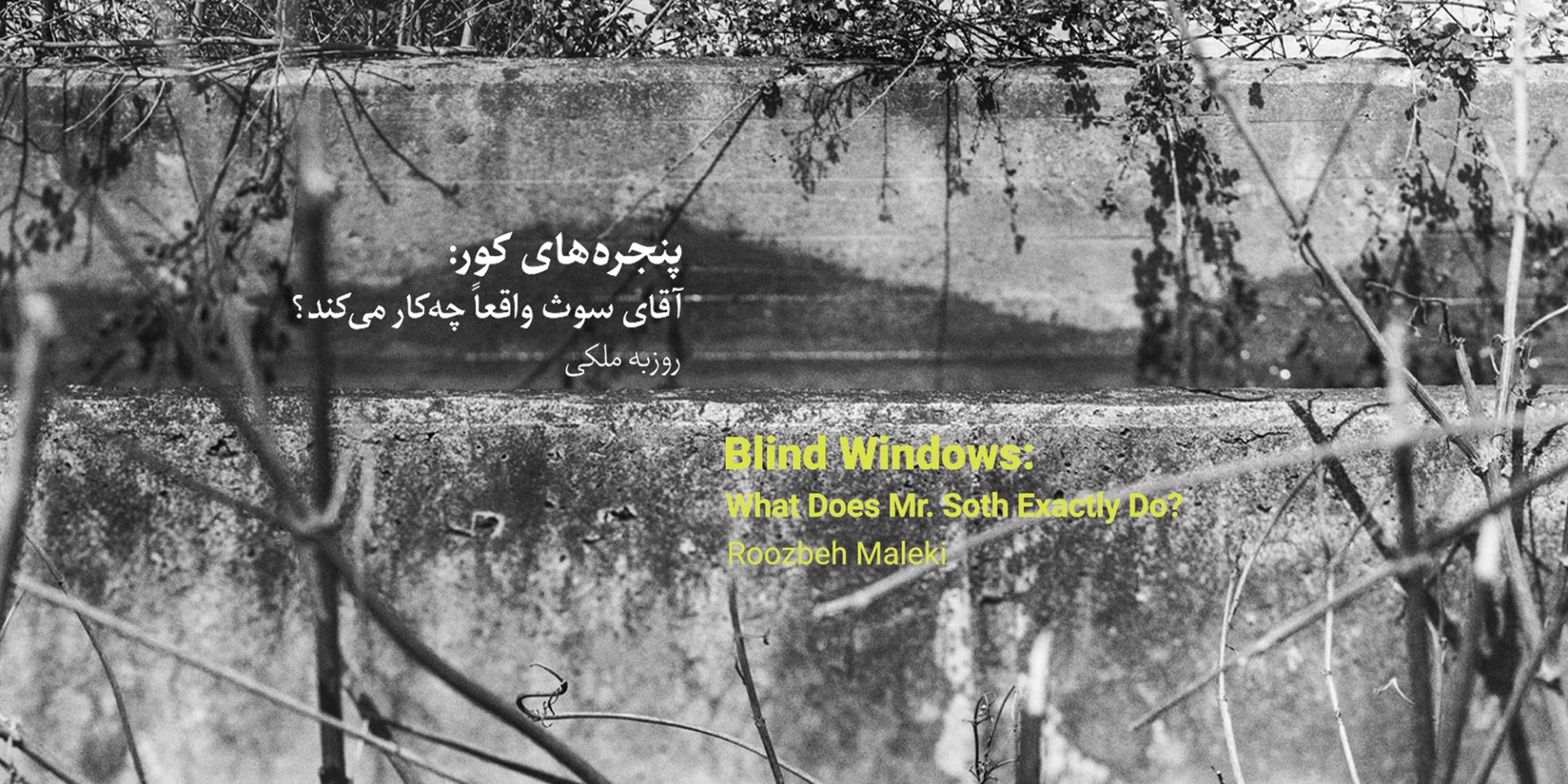
“Blind Windows
What Does Mr. Soth Exactly Do? ”
Exhibition by Roozbeh Maleki
23 June – 14 July 2023
The present series began with photo shootings in 2014 and 2015; however, only one photograph from the images of those years found its way to this series. In the beginning, by capturing these images, I intended to study the outskirts of the northern cities of the country and the predominant relations between people and the regions. Therefore, like other topographic approaches, I took for granted the possibility of examining and studying the surrounding world through photographic images. In other words, I not only initially took the images as documentary alternatives to external reality but chiefly considered them perspicuous and explicit. But now I know that such perception owes more to the lack of an appropriate alternative for reality than the nature of photography itself. In other words, I know that a straightforward representation of a photographic image, like any other concept, is constructed of equating unequal things. Also, I understand that, at best, there is only an aesthetic and symbolic relationship between the two realms of external reality and the photographic image. In such a situation, to advance the series, I must accept that the photograph is merely a metaphor of reality. But, contrary to John Szarkoswki, I don’t assume this metaphor as a window or mirror. This metaphor is not even what Alec Soth explains as a window with glass or a highly reflective window; because the mechanism of the photographic image is more complicated than accepting such a bald metaphor. Instead, the complicacy of the codes of a photograph goes so far that it tempts me to consider it as a blind window similar to a written or spoken text (or any other wordbased text) which only allows concentrating on its surface. Encountering an image, it is as if I am reading a text about the outskirts of the northern cities. Obviously, when encountering this text, in addition to the relation of the text and the subject, the relationship between distinct parts of the text and the intertextualities can also be observed. Having let go of the concern of studying the surrounding world through photographic images and instead concentrating on the textual and intertextual relations made a wide range of photography topics possible; it also provided a context for the introduction of a reference text as the “source of the exercise” for the series. Accordingly, the present images, which belong to a greater project titled Exercise, have chosen Alec Soth’s Photographs as its “source of the exercise” for a more meticulous study of intertextual relations. Thus, instead of representing and studying the external world, the present “exercise” intends to study photography and be part of its internal intertextual relations.
Leave a reply